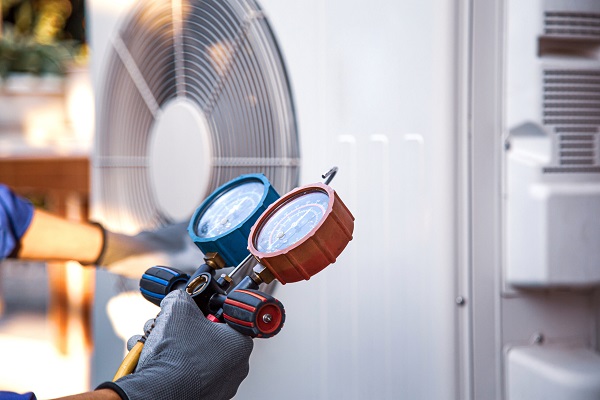Heating, Ventilation, and Air Conditioning (HVAC) systems are integral to maintaining indoor comfort in residential, commercial, and industrial spaces.
A crucial but often overlooked aspect of HVAC maintenance is air duct cleaning.
Clean air ducts ensure the efficient operation of the HVAC system, enhancing air quality, extending system lifespan, and ultimately saving energy. This article delves into how regular air duct cleaning contributes to HVAC efficiency, the benefits it offers, and best practices for maintaining clean ducts.
Understanding the Role of Air Ducts in HVAC Systems
Air ducts are the passageways through which conditioned air travels to different parts of a building. They play a central role in maintaining a comfortable indoor environment by circulating air from the heating or cooling units to various rooms.
However, as air circulates through these ducts, it can carry dust, pollen, mold spores, and other contaminants, which accumulate over time.
Without regular cleaning, these contaminants can build up, restricting airflow and causing the HVAC system to work harder to achieve the desired temperature. This extra effort increases energy consumption and can shorten the system’s lifespan. Thus, maintaining clean air ducts is essential for ensuring the system runs efficiently.
How Air Duct Cleaning Enhances HVAC Efficiency
- Improves Airflow
Dust, dirt, and debris can settle inside air ducts, especially in bends and corners. This buildup restricts the flow of air through the ducts, forcing the HVAC system to use more energy to move air throughout the space. By removing these obstructions, air duct cleaning allows air to move more freely, reducing the strain on the blower motor and other components. Improved airflow means that the system can heat or cool spaces more evenly and quickly, leading to reduced energy consumption and improved overall efficiency. - Reduces Energy Consumption
When air ducts are clean, the HVAC system doesn’t have to work as hard to maintain the set temperature, which translates into lower energy use. Studies have shown that cleaning a lightly soiled system can save up to 15% in energy consumption. This reduction is especially significant for larger commercial spaces where HVAC systems are running almost continuously. By lowering energy demand, regular duct cleaning can also reduce utility bills, providing cost savings for homeowners and businesses alike. - Prevents System Overheating
When airflow is restricted due to dirty ducts, the HVAC system may overheat. The blower motor, in particular, can struggle to push air through the blockages, causing it to overheat and eventually burn out. Regular cleaning removes dirt and dust, helping to prevent overheating and avoiding expensive repairs or premature system replacements. - Enhances Indoor Air Quality
Although not directly related to energy efficiency, improved indoor air quality is an important side benefit of regular air duct cleaning. Dust and contaminants that accumulate in air ducts can be circulated back into indoor spaces, leading to respiratory issues, allergies, and other health problems. By maintaining clean air ducts, the air quality is improved, leading to a healthier indoor environment. This can reduce the need for air purifiers or other secondary air-cleaning devices, further reducing energy usage. - Extends System Lifespan
A clean HVAC system tends to have a longer operational life. Dust and debris can cause wear and tear on moving parts, leading to more frequent repairs and a shorter overall lifespan. Regularly cleaned air ducts mean less strain on the HVAC system, allowing it to operate efficiently for a longer period. This saves money in the long term by delaying the need for a costly system replacement.
Best Practices for Air Duct Cleaning
- Frequency of Cleaning
While the need for air duct cleaning can vary depending on factors like location, usage, and environmental conditions, it is generally recommended to clean air ducts every 3-5 years. For homes with pets, smokers, or allergy sufferers, more frequent cleaning (every 2-3 years) might be necessary. Commercial spaces and industrial buildings may require more frequent maintenance due to higher occupancy and usage rates. - Use Professional Services
Although some homeowners may attempt to clean air ducts themselves, professional cleaning services have the expertise, equipment, and knowledge to do a thorough job. They can reach into hard-to-access areas of the ductwork and remove contaminants without causing damage to the ducts or the HVAC system. Hiring a certified HVAC technician ensures that the job is done correctly, maintaining both the efficiency and longevity of the system. - Incorporating Routine Maintenance
Air duct cleaning should be part of a broader HVAC maintenance routine, including regular filter changes, checking for leaks, and inspecting the blower and coils. By integrating these maintenance activities, homeowners and facility managers can ensure that the entire system operates efficiently and reliably. - Inspecting for Mold and Mildew
During cleaning, it’s also essential to check for signs of mold or mildew growth within the ductwork. Mold can compromise air quality and may require specialized cleaning methods. Addressing mold issues promptly prevents the spread of spores and maintains a healthier indoor environment.
Conclusion
Regular air duct cleaning is more than just an optional maintenance task; it is a key component of ensuring HVAC efficiency.
By improving airflow, reducing energy consumption, preventing system overheating, and enhancing indoor air quality, clean ducts help maintain optimal HVAC performance.
For homeowners and businesses, investing in periodic duct cleaning translates into a more comfortable environment, lower energy bills, and an HVAC system that serves them well for years.
Incorporating professional air duct cleaning into routine maintenance can maximize these benefits, making it a wise investment in the long-term health of any HVAC system.
Also Read
Air duct cleaning: Enhancing Indoor air quality in modern buildings
Rehabilitating sewers the smart way: An in-depth look at trenchless technology

